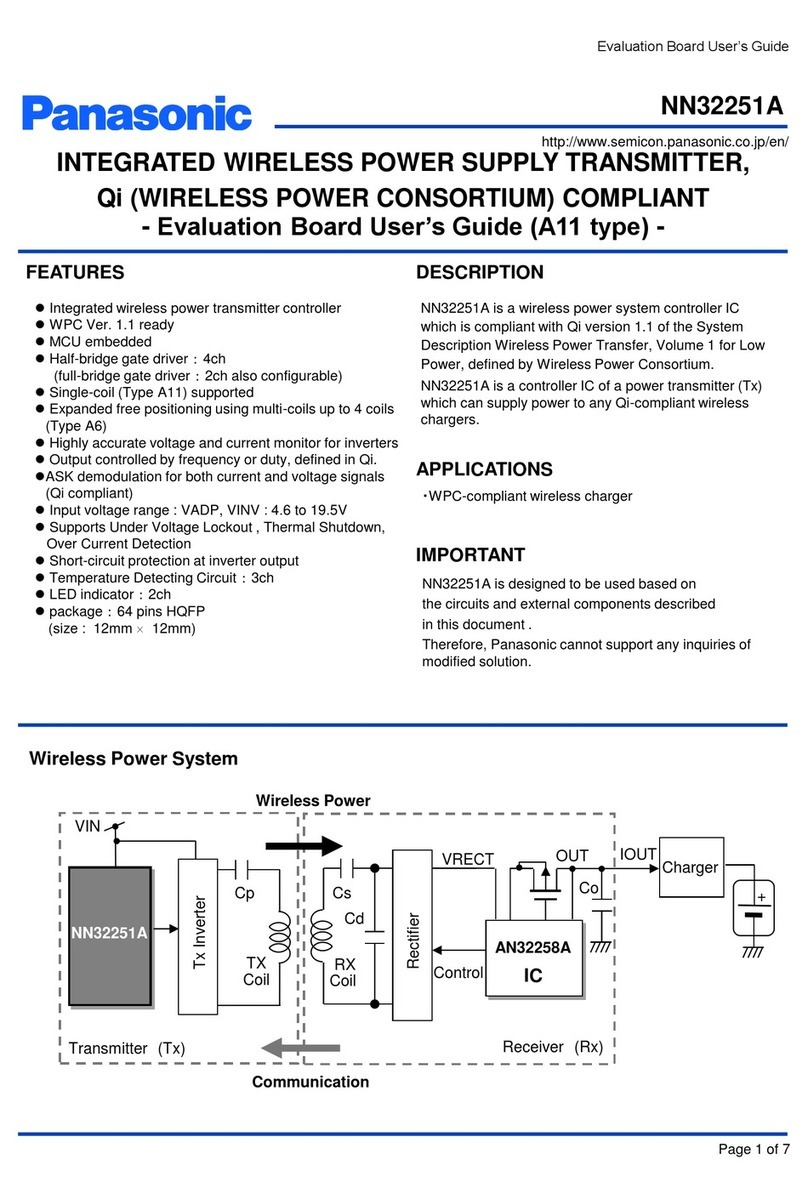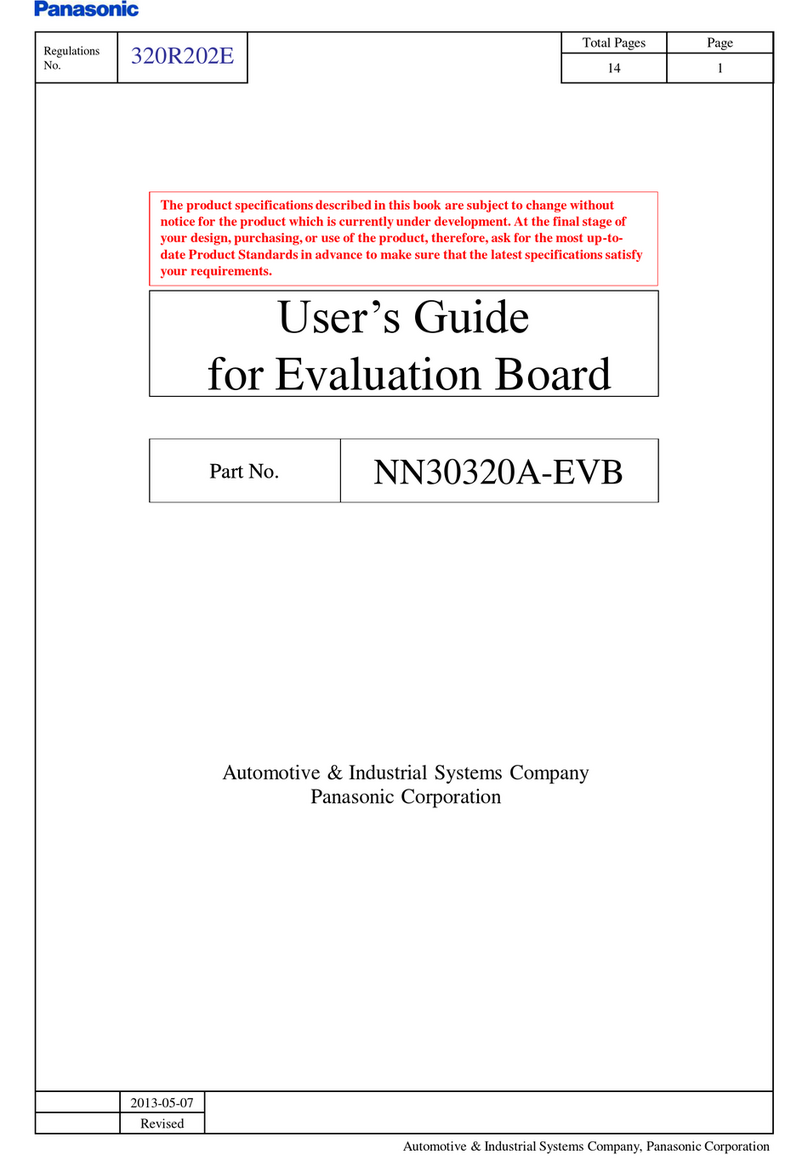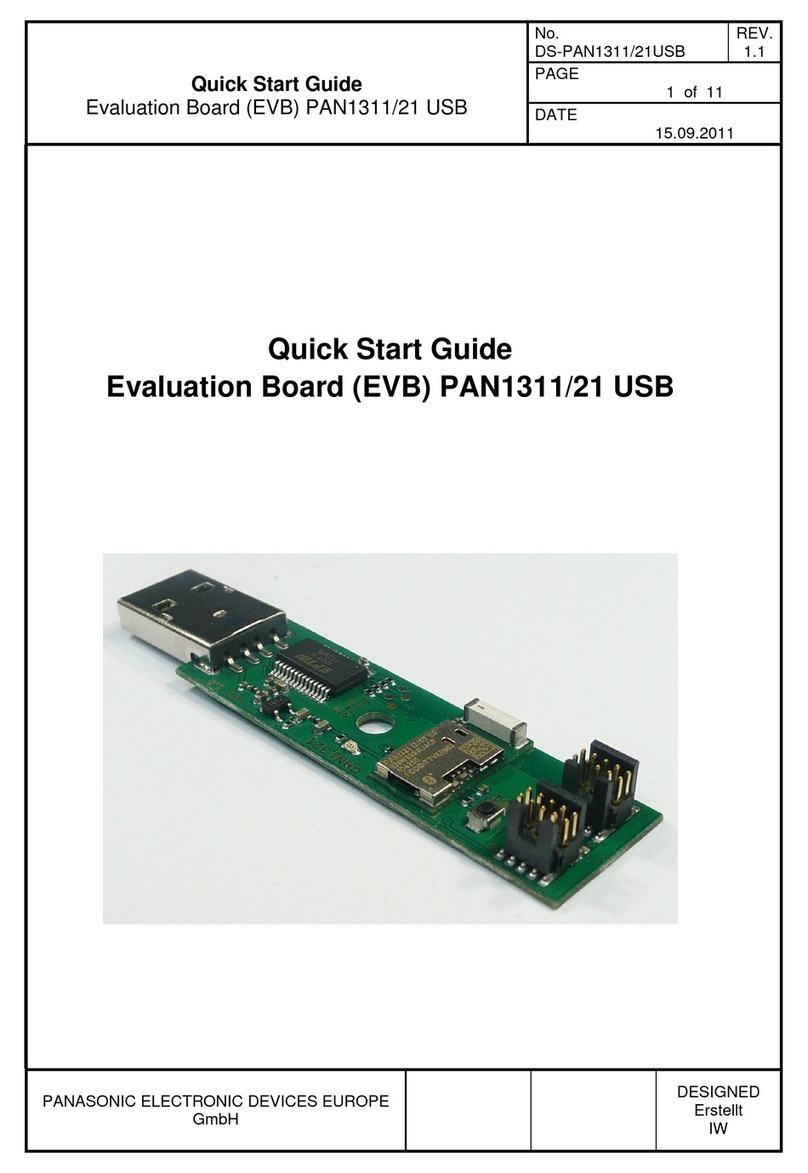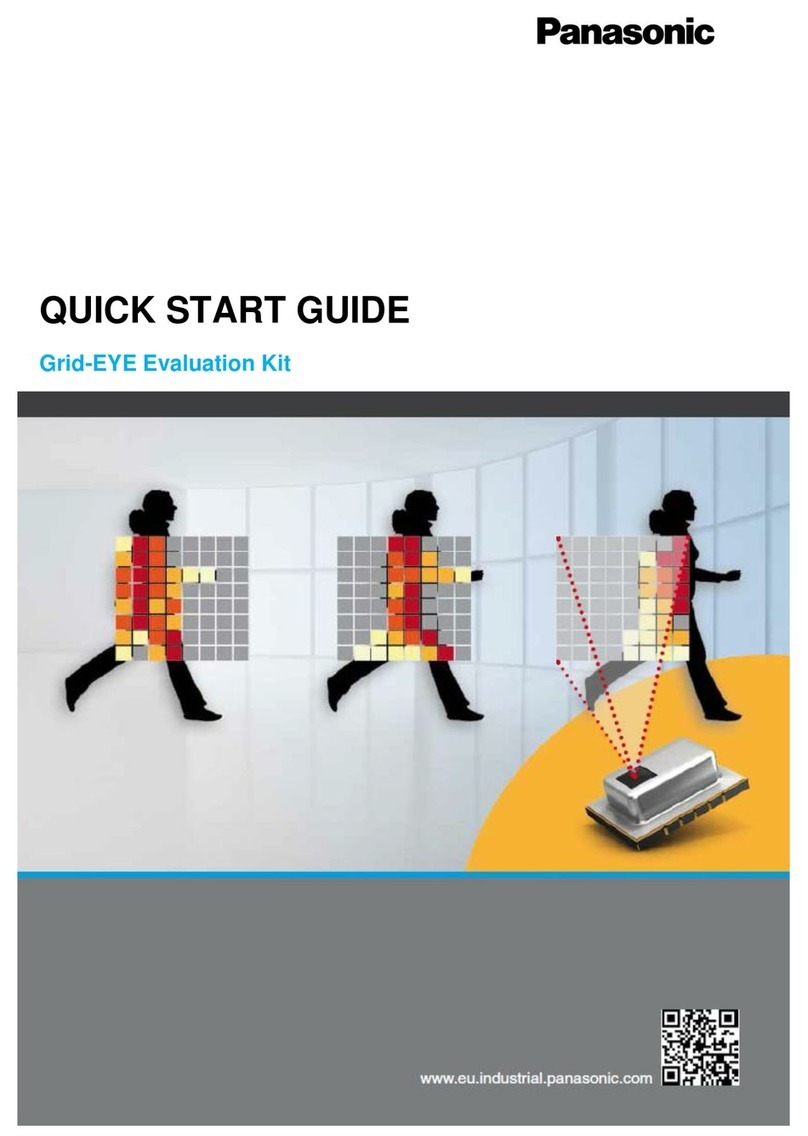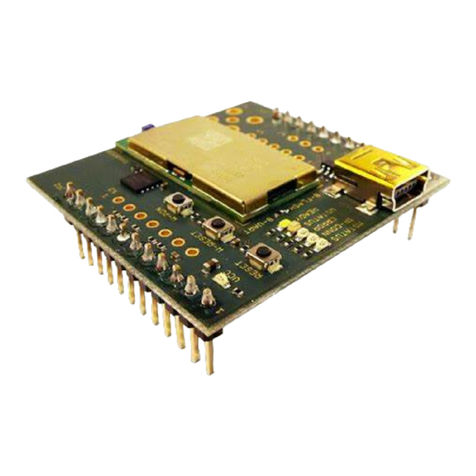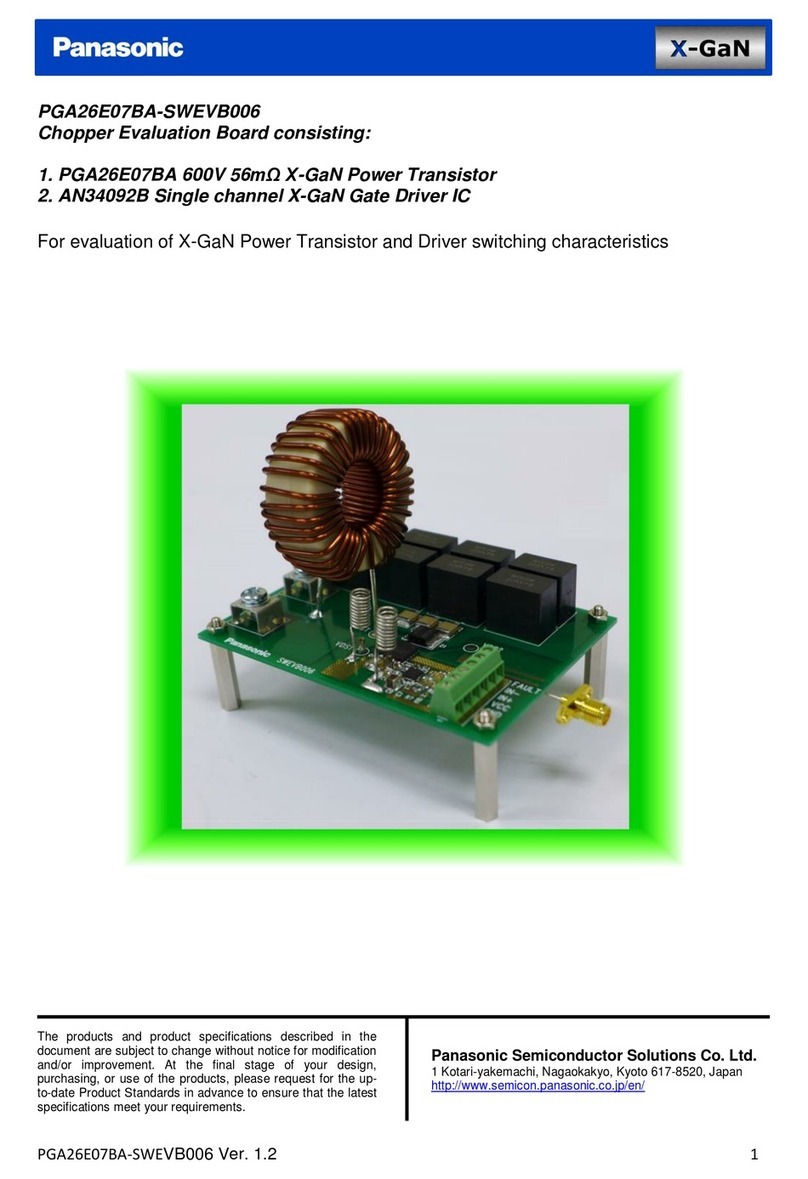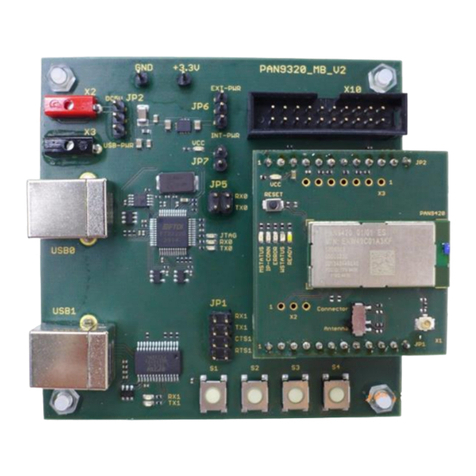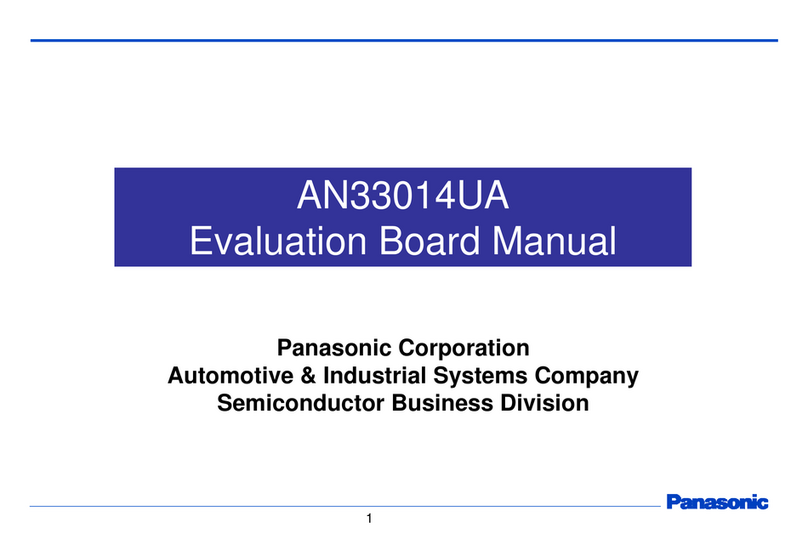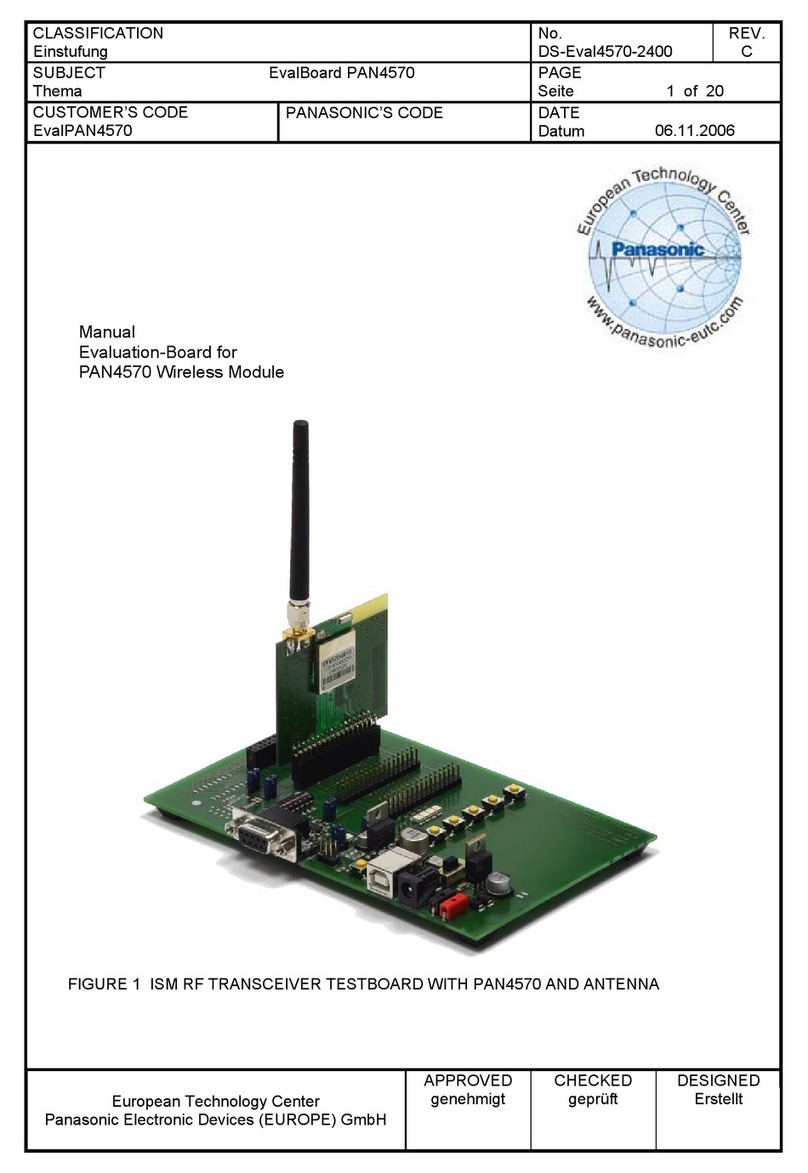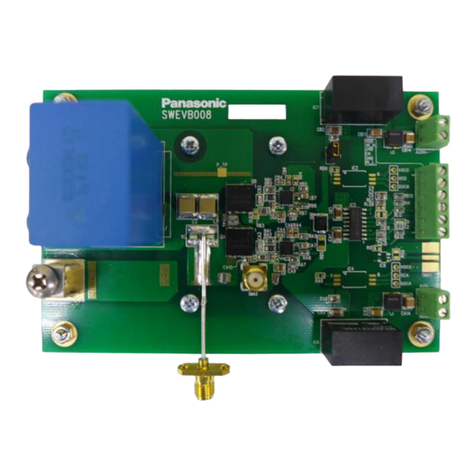CLASSIFICATION
Einstufung PRELIMINARY No.
DS-Eval4555-2400
REV.
01
SUBJECT
Thema
EvalBoard PAN4555
PAGE
Seite
10 of 16
CUSTOMER’S CODE
EvalPAN4555
PANASONIC’S CODE
DATE
Datum
30.03.2007
European Technology Center
Panasonic Electronic Devices (EUROPE) GmbH
APPROVED
genehmigt
CHECKED
geprüft
DESIGNED
Erstellt
9. FREESCALE ZIGBEE IMPLEMENTATION
9.1. DEVELOPMENT OF APPLICATIONS WITH FREESCALE BEESTACKTM
PAN4555 is built around the MC13214 single package from Freescale Inc. which includes the
freescale ZigBee codebase BeeStackTM (downscaled versions of PAN4555 with MC1321x suited
for IEEE802.15.4 or SMAC only are available on demand as well).
The access to BeeStackTM is provided after registration and login at www.freescale.com/zigbee .
After login the BEEKITDOWNLOADPACKAGE.zip can be downloaded. This package contains
BeeStackTM , IEEE802.15.4 MAC and SMAC codebases. For PAN4555 PHY testing using
TestToolTM the download of the latest 1321xEVK package is recommended.
After successful installation of Beekit on a PC open BeeKit. A ZigBee sample solution *.bksln can
be created in a few steps.
Important: Before a solution may be exported for PAN4555 the MC1321x target settings have to
be changed via the “User defined target editor”. The required changes are:
1. Uncheck the “Use external Antenna Switch”
2. Adjust the port settings depending on your application, the PAN4555 datasheet and for
use of the PAN4555 carrierboard the pinlist in chapter 10.3.
For importing, compiling and debugging of the BeeKitTM solution the Integrated Development
Environment (IDE) MetrowerksTM CodeWarrior from www.metrowerks.com is required.
As device flash programmer the USB HCS08/HCS12 Multilink from www.pemicro.com is
recommended.
Important: PAN4555 is a single rf port design with MC13214, refer also to AN3248.
The Freescale reference boards 13213-NCB and 13213-SRB are dual port designs,
software for these boards will not run.
The shipping of products which use ZigBeeTM technology requires a membership of the ZigBeeTM
Alliance (www.zigbee.org), at least as an adopter member, and is mandatory for the ZigBeeTM
product certification procedure and use of the ZigBeeTM Logo.
The prices and fees as known from today are as follows:
1. IDE CodeWarrior order number CWS-H08-C64K-CX from www.metrowerks.com : US$ 995,-.
2. USB HCS08/HCS12 Multilink (www.pemicro.com), orderable at www.freescale.com/zigbee
with the ID USBMULTILINKBDM: US$ 99,-
3. BeeStackTM: The support fee after a 30 days period free of charge required by Freescale Inc.
is US$ 999,-.
4. Companies selling products using ZigBeeTM technology have to be a member of the
ZigBeeTM Alliance (www.zigbee.org). The minimum fee per year for a membership as adopter
is US$ 3500,-.
5. For adopter members the fee for listing the first product at (www.zigbee.org) is US$ 1000,-.
6. The cost of a ZigBeeTM product certification at a testhouse (TÜV Rheinland) ranges
from approximately US$ 4000,- to US$ 8000,-, depending on the implemented software.
